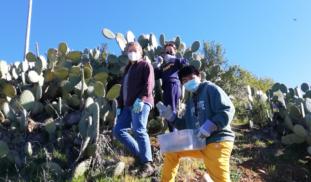Please wait...
About This Project
Plants absorb carbon dioxide (CO2) and sunlight to grow in a process called photosynthesis. Cacti, however, absorb CO2 at night and store it as malate, which is broken down by sunlight during the day. Cacti are opaque, so the sunny and shaded sides do this independently and a voltage difference occurs. We want to know what factors influence this voltage difference. Results could reduce the impact that renewable energy has on biodiversity via a new cactus-based electricity generation technique.

Browse Other Projects on Experiment
Related Projects
Real-time underwater fish identification and biomonitoring via machine learning-based compression of video to text
Underwater monitoring of marine life has traditionally followed a "set it and retrieve it” approach due...
Combining eDNA & Biologging Technologies to Capture Deep-Sea Predatory Interactions Between Whales & Prey
We aim to combine eDNA sampling and biologging to study predator-prey interactions in the deep sea in real...
Can A Low-Cost Camera & Loitering Guard Better Monitor Marine Protected Areas?
Marine Protected Areas (MPAs) are difficult to enforce due to their remoteness and often invisible borders...


